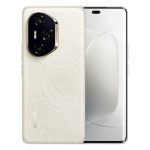BMW and Toyota will team up to produce hydrogen fuel cell vehicles starting mid-decade, according to a report in Nikkei Asia.
The two will begin producing and selling hydrogen fuel cell vehicles developed jointly as early as 2025, BMW sales chief Pieter Nota told the publication.
The automakers have worked together before, jointly developing the iX5 Hydrogen based on BMW’s X5 SUV, as well as the BMW Z4 and Toyota Supra sports cars in 2019.
Toyota has deep experience with fuel cell technology, with its eight-year-old Mirai mid-size sedan heading into its second generation. Instead of an engine or a battery, these cars use hydrogen and oxygen to create electricity.
Fuel cells offer advantages over battery-electric vehicles. They can be refueled in three to four minutes and travel longer distances. However, the U.S. network of public hydrogen stations is concentrated in California, and even there it’s not yet ready for mass adoption.
Despite BMW’s re-entry into the EV market with the i4 four-door coupe and iX SUV, the company has hinted that it would be pursuing hydrogen, too. In a recent earnings call, CEO Oliver Zipse said that the company’s next-generation platform, Neue Klasse, will likely be designed to accommodate the gaseous fuel in addition to pure battery power.
The company has pursued a similar all-of-the-above strategy before with a platform known as CLAR, which supported internal combustion, plug-in hybrids and full battery-electric propulsion. CLAR allowed BMW to move quickly on plug-in hybrids, but its more recent pure EV efforts have been delayed relative to its competitors. Neue Klasse may fall prey to the same problems, or it may solve them. The market will get to decide starting in 2025, when new 3-series sedans and X3 SUVs based on the platform go on sale.
The collaboration allows both companies to hedge their investments in zero-emission vehicles. BMW aims for EVs to comprise half of its corporate brand sales, including Rolls-Royce and MINI, by the end of the decade.
Powered by WPeMatico






